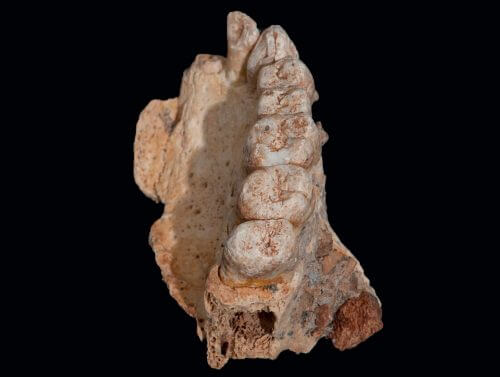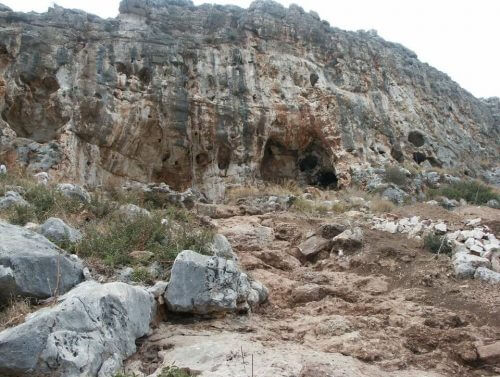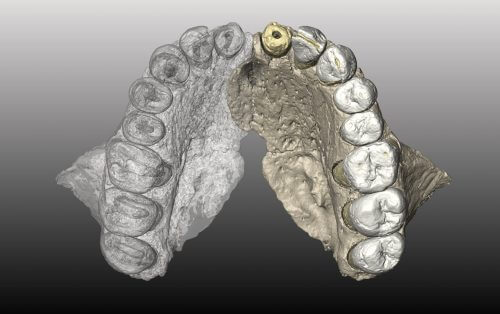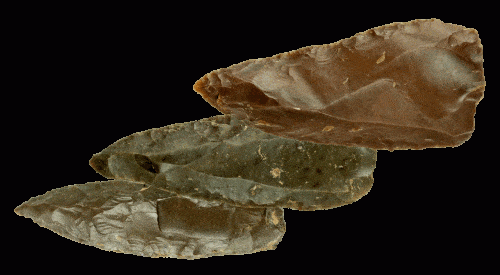A jaw anatomically identical to the jaw of modern humans (Homo sapiens), which was more than 170,000 years old, was found in the Mycelia cave in Carmel. Its discoveries significantly advance the date of the migration of our species from Africa, which until now was estimated to be about 100,000 years before our time * Prof. Israel Hershkovitz from Tel Aviv University: "The new find from the Miselia Cave sheds new light on the question of modern man, when did he appear and when did he leave Africa ".

Historical discovery: The oldest human fossil outside of the African continent was discovered in the Miselia cave in Carmel, Haifa. This is reported by an international team of researchers, led by Prof. Israel Hershkovitz from the Department of Anatomy and Anthropology, Sackler Faculty of Medicine, Tel Aviv University and Prof. Mina Weinstein-Evron from the Zinman Institute of Archeology at the University of Haifa. The findings of the historic discovery will be published tomorrow, January 26, in the prestigious journal Science.
The fossil - the upper jaw bone of an adult, which includes several teeth - was discovered in the Mycelia Cave on Mount Carmel. Using advanced research methods, the researchers showed that the jaw and teeth have morphological characteristics of modern humans (or Homo Sapiens). Various radiometric dating methods have shown that the age of the fossil is between 177,000 and 194,000 years.
"This is one of the most important anthropological discoveries of recent years," says Prof. Hershkowitz, who also serves as the head of the Dan David Center for the Study of Human History at the Steinhardt Museum of Nature at Tel Aviv University. According to him, "the new find from the Mycelia cave sheds new light on the question of modern man: when did he appear and when did he leave Africa. The find undermines the classic theory of the departure from Africa, it changes the timetable and the definition of what a modern person is."

Prof. Hershkowitz explains that the time of the appearance of intelligent man, the dating of his departure from Africa and his migration routes from Africa to Europe and Asia are at the basis of understanding the evolution of the human race. The Land of Israel is a central corridor for human migration during the Pleistocene (the last two million years or so), along which different human groups existed, sometimes simultaneously. The new discovery breaks new ground for understanding how the human population took shape, from a collection of local groups to one homogeneous population.
"For the humans who came out of Africa, the world was not empty," explains Prof. Hershkowitz. "In addition to Homo sapiens, different groups of the human family lived there such as: Neanderthals and Dinos, and there is no doubt that there were mutual relations between them and the intelligent man (Homo sapiens). Our findings indicate that an important part of the morphological development of modern man probably took place outside the borders of Africa, perhaps in the Land of Israel, among other things as a result of interbreeding with those other species of man."
According to the accepted theory, anatomically modern humans evolved in Africa 200,000 years ago and migrated out of Africa 100,000 years ago. However, the fossil from Miselia is very similar to the modern man, more so than the fossils dating to the same period found in Africa, and it is much earlier than the modern humans discovered in the caves of Capza (near Nazareth) and Sehol (in Carmel), and until now considered to be the most ancient outside the borders of Africa.

The Mycelia breakthrough coincides with a number of new archaeological and anthropological findings, which also point to an earlier origin of modern humans, and to the migration of modern humans out of Africa before the accepted date of 100,000 years before our time. Added to these findings are genetic studies published in recent years that strengthen the hypothesis that modern humans evolved in Africa earlier than believed, 300-500 thousand years ago.
According to Prof. Mina Weinstein-Evron, from the Zinman Institute of Archeology in Haifa, the archaeological findings show that the inhabitants of the Miselia Cave were a skilled group of hunter-gatherers, who hunted large mammals, controlled fire, used a variety of plants and produced stone tools typical of the early Middle Paleolithic period In our area, similar to modern humans in Africa.
"The tool industry of the modern humans in Miselia was very different from that of their predecessors in the Levant and indicates great sophistication and innovation," says Prof. Weinstein-Evron. "The presence of such a tool kit in the Mycelia Cave next to a human fossil that is almost 200,000 years old, suggests that the cultural change during the transition between the different periods in our region was accompanied this time by the exchange of different hominin populations."

See more on the subject on the science website:

3 תגובות
Mmm,
Why does it seem to me that those who do not know what "Judaism" is cannot speak out against it?!
Mm
I think you described yourself...
The dilemma of Jewish pride:
On the one hand - we are first!
On the other hand - 170 thousand years ago man was not yet created...
Why does it seem to me that someone who does not know what a "dilemma" is can hold both thoughts at the same time?